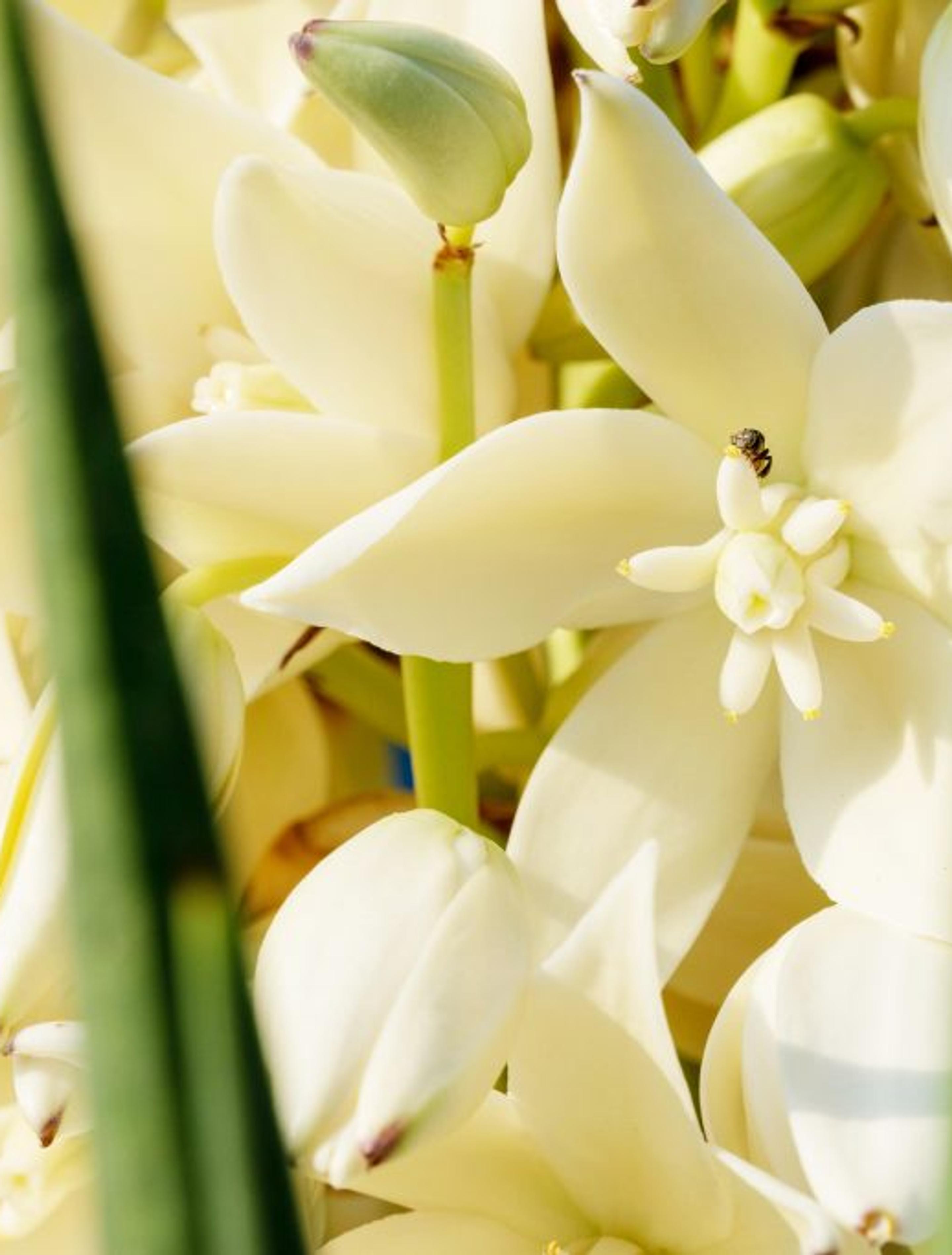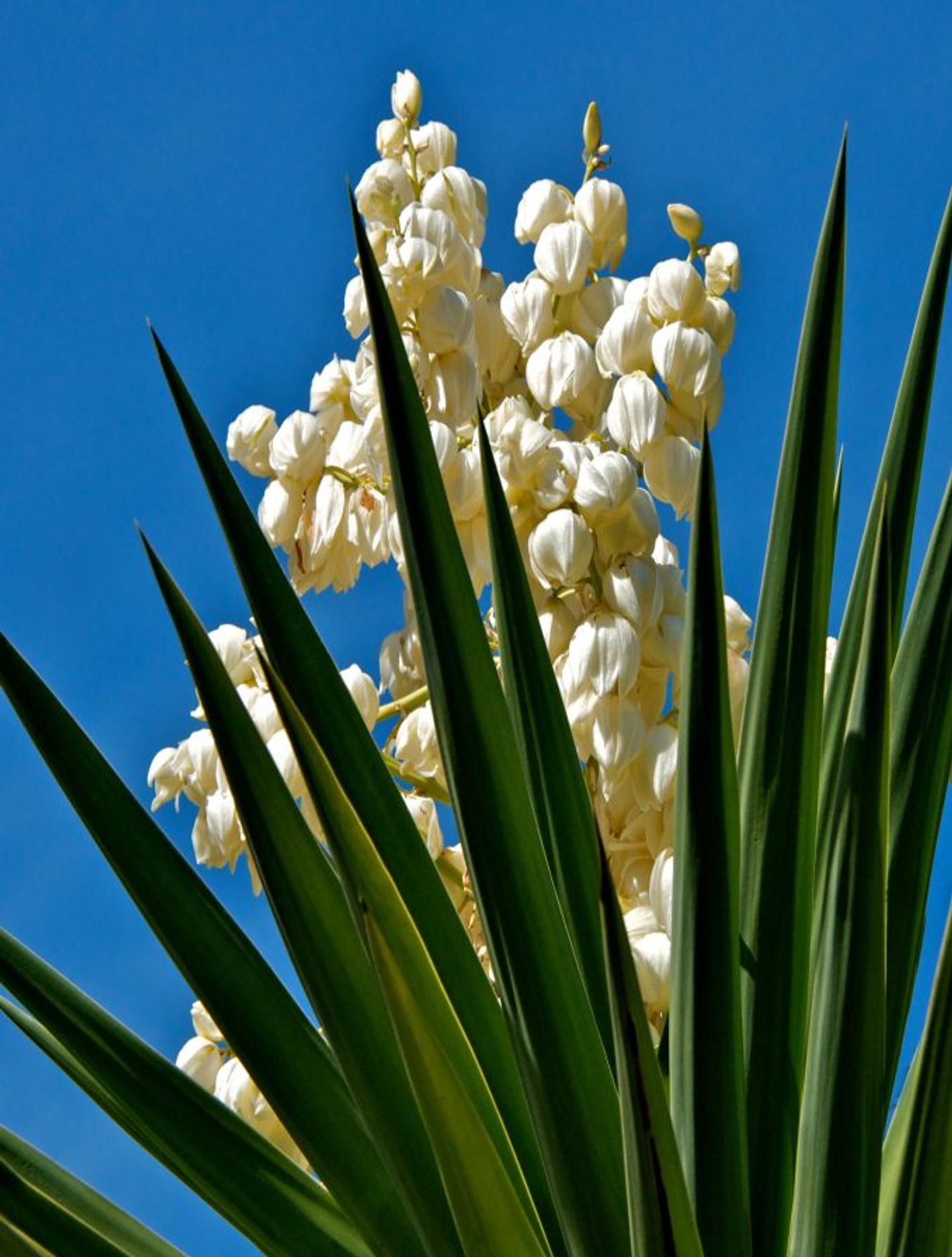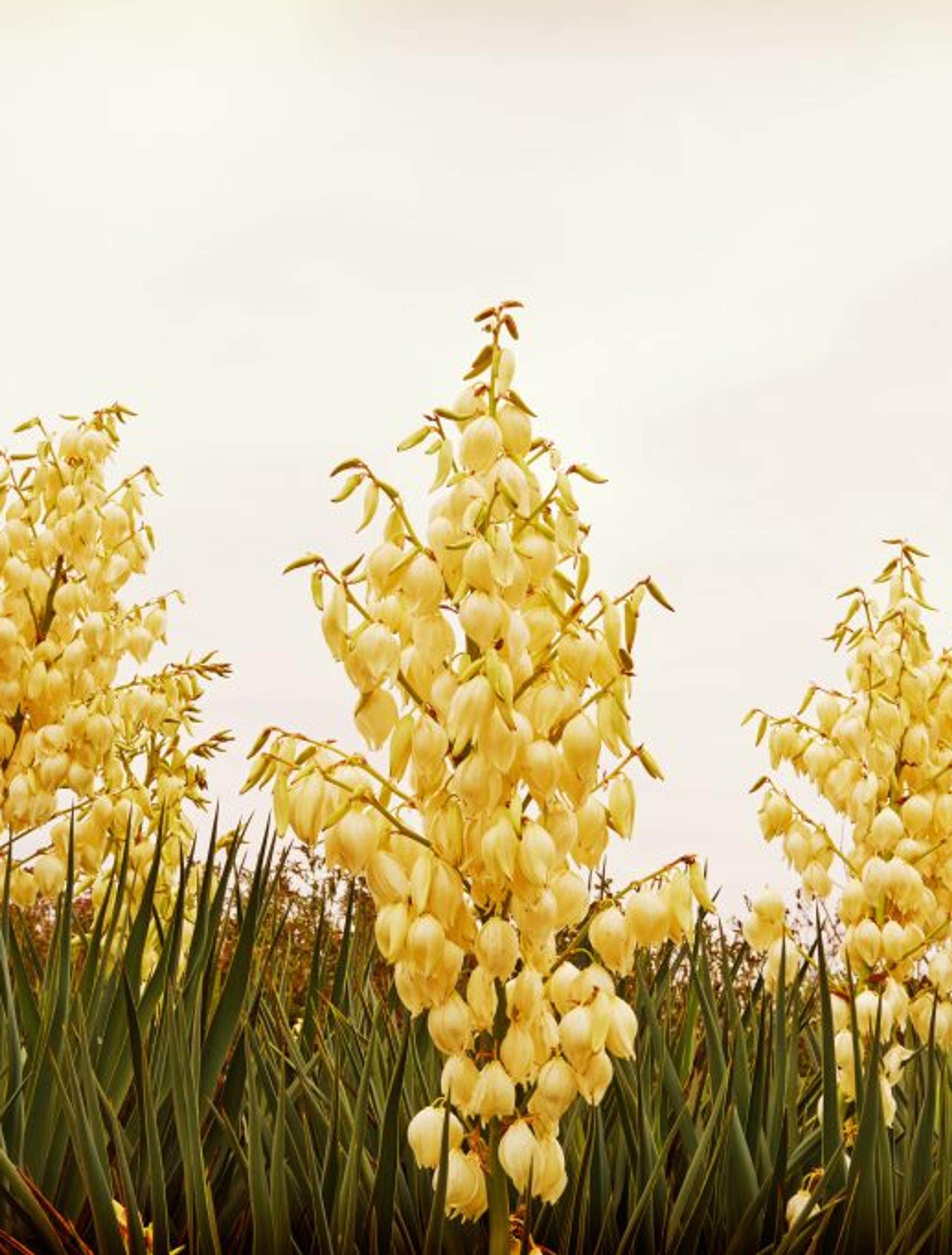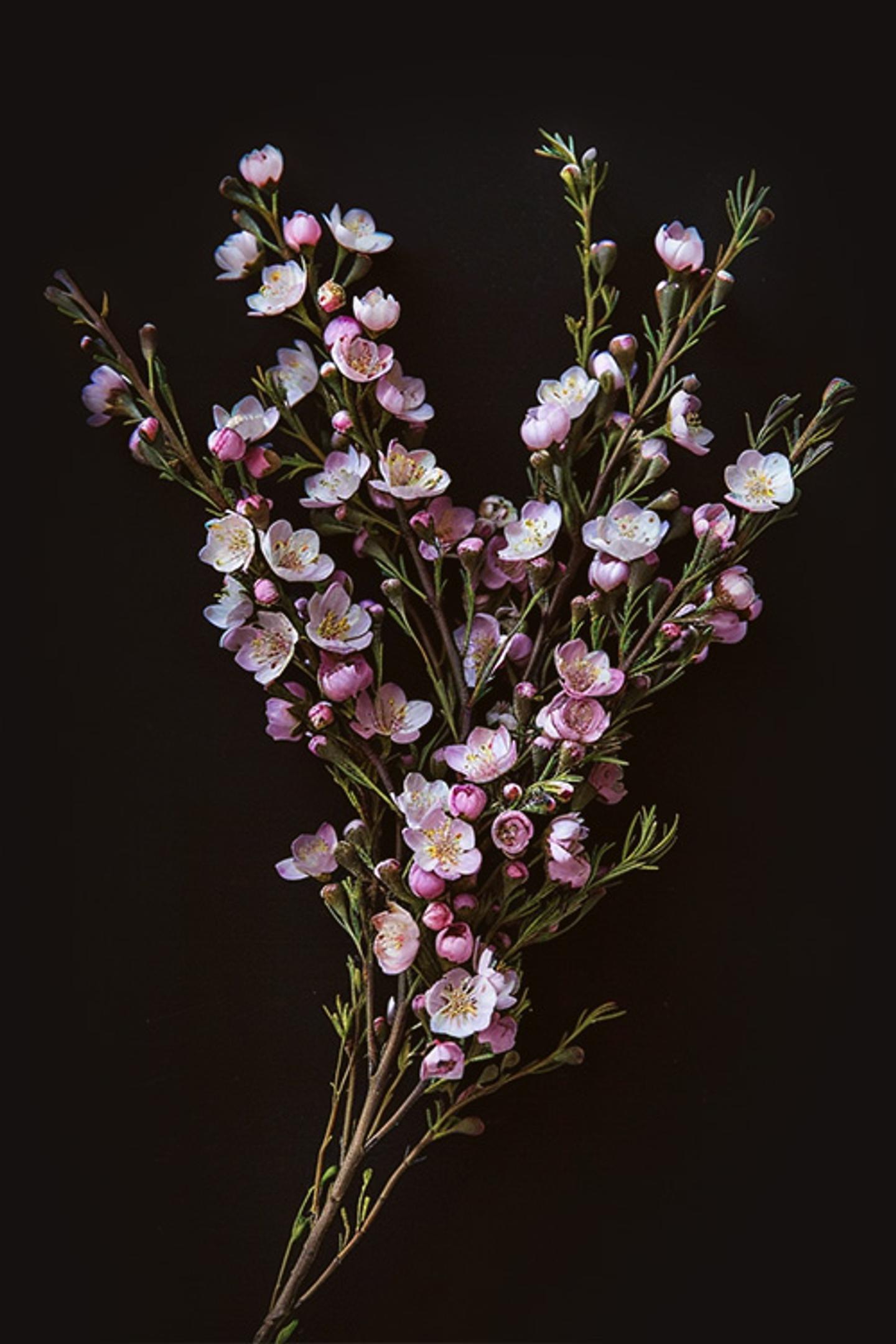Flower Meanings
Yucca


The Meaning of Yuccas
The Yucca plant or ‘palm lily’ is strong, resilient, independent, and don’t need no man. But really, these plants are SUPER strong. The Yucca plant was a critical piece of traditional Southwest Indian Life. Traditionally, people of the land ate both yucca fruits and roots, and the tough yucca fiber was used to weave baskets and sandals. The leaves of the yucca plant were also used ceremonially by the Navajos. While never necessarily used as a core food source within southeastern tribes such as the Cherokee, they have been used for their roots. The nutrients from the roots were utilized for their medicinal qualities, particularly to treat sores and rashes.
The yucca plant was also used as a clan symbol in some Native American cultures such as the Navajo and the Pueblo cultures.
While the Navajo tribe’s ‘Yucca Clan’ is named Hashk’ aa hadzohi, the Pueblo’s actually have a Yucca Dance that lives among their tribal dance traditions. [1]
Since we’re working with a plant that can live for hundreds of years, we’d have to expect that there would be a significant amount of legends they’ve picked up along their journeys. One such legend is a Native American legend about the origin of sheep and cattle:
“Naiyenesgani went around looking in vain for monsters. When he failed to find any he started off in this direction, toward the Mescalero country. He climbed to the top of White Mountain and looked about in all the different directions in vain. There were no monsters. Then he threw away his staff. “You will get your living by means of this,” he said, and right where he threw it, it became a yucca.
Then he washed from his hands the pollution from the killing of the monsters and threw it in different directions. “With this you will live,” he said, referring to the Mexicans. That is why sheep and cattle have a bad odor. The dirt he washed from his hands became cattle and sheep. All the monsters were gone. The Mescalero live upon the staff which he threw away, the Mexicans live upon the cattle and the sheep. That is why Mexicans have many sheep and cattle. He spoke to them this way.” [2]
Some other common meanings of the yucca plant are:
New opportunities: For their resiliency and determination
Loyalty: For their long lifetime
Protection: From their natural protective spikes
Purity: From their ability to recycle the air around them

"The planting of a tree, especially one of the long-living hardwood trees, is a gift which you can make to posterity at almost no cost and with almost no trouble, and if the tree takes root it will far outlive the visible effect of any of your other actions, good or evil."
George Orwell
The History of the Yucca
The yucca flower has quite a bit of historical uses. Their stalks, buds, flowers, and fruits have served as food for generations. Their roots can also be used for soap and as a laxative, pretty diverse, huh? Their leaf fibers are also used as cordage, weaving material, and to make sandals. [3]
That’s all great…but can we go back to the whole “used for soap” part?
Apparently, the green gourd and soapwort were preferable to many Native Americans, but you have to make do with what you have, right? Early Native Americans would spread their clothing on rocks, rub them down with a piece of yucca (cut big enough to fit inside the hand like a bar of soap), and rinsed! Amazing! [4]
Similarly, the banana yucca plant also shares these uses, but has the added bonus of producing sweet banana-like fruit! When ripe, the fruit is 2 to 3 inches long and medium green. Stiff, blue-ish green foliage edged with curled fibers make this plant beautiful even when it’s not in bloom. [5]
The fruits themselves tend to be fleshy and succulent. You can sort of compare them to short, plump, green bananas. Most other yucca plants will have more dry, hard fruits. The banana yucca fruits are actually considered traditional foods. They are often picked before maturity and ripened off of the plant to keep wildlife from chowing down. They are usually prepared by roasting or baking, removing all of the seeds, pounding out the reminder flesh into a pulp, forming the pulp into flat cakes, and sun-drying them for later use. Your result will be an incredibly nutritious yet sweet and delicious fruit. [3]
With the yucca’s desert look and shark, spiky leaves, it’s no surprise that many years ago, yucca’s were planted outside a window to discourage any “peeping Toms” from sneaking a peek. The more you know! [4]
DID YOU KNOW - Yucca Fun Fact
Yuccas are deer-resistant due to their sharp, pointing palms!

How to Grow Yucca
Yuccas are incredibly deeply rooted and long-living. Individual plants can live hundreds and hundreds of years. They are drought-tolerant succulents that are native to the desert. However, you can grow Yucca baccata in many different climates. [5] Their leaves stand out protectively from the plant’s center, their sharp tips acting as a sort of porcupine-like armor. No wonder these plants live so long, they have a built-in bodyguard. Most yuccas also have loose, thread-like fibers that curl in from their edges. [3]
Now that we have a little basis, let’s dive right in.
So, you’re planting a yucca plant; first, we should clarify, ‘yuccas’ are of no relation to ‘yuccas,’ although they are quite often confused. Yuca, otherwise known as Cassava, is a plant with edible, starchy tubers that tapioca and cassava flour are made from. The roots of the yucca plant are not edible.
When to plant? You’re going to want to start your yucca seeds indoors at any time of the year, or outdoors during the spring. If you’re planning on starting a hardy variety outside, the spring temperatures should be 55 degrees to 65 degrees Fahrenheit. Wait until the temperatures are 66 to 75 degrees for more tender varieties.
Where to plant? Now onto your planting area. Be sure to choose an area that receives parietal to full sun, but most importantly, a spot that is very well-draining. Yuccas will develop root-rot very easily if there is residual or standing water. Another factor to consider when choosing a planting area is the mature size of your yucca plant. Some of them can grow to be very large, so you’ll want to make sure you choose a spot that leaves your new plant enough room to grow! Be sure you don’t plant them in an area where their sharp palms could poke someone, such as walkways or recreational areas.
Be aware of the yucca’s root structure as well, as they can grow incredibly large over time and have been known to crack foundations, disrupt retaining walls, and invade pools and irrigation pipes. They are also extremely difficult to get rid of, and any remnants that are left behind can grow more yuccas.
How to plant: Soak your seeds for 24 hours before planting to help with germination, or rub the surface with sandpaper to cause a bit of scaring. Plant your seeds at a depth of one to two seed lengths. Keep your newly planted seeds moist, and you should begin to see signs of germination within three to four weeks! Transplant your seeds into bigger pots or to their permanent locations at about eight weeks. [6]
DID YOU KNOW - Yucca Fun Fact
At night, yucca flowers emit a fragrance that attracts yucca moths.

How to Care for Yuccas
As we’ve mentioned, yuccas are incredibly drought-tolerant but will look better if you keep to watering them about an inch once a week during the spring and summer season, and may benefit from an occasional deep soak. Over the winter, they require less water. Watch out for yellow leaves and soft roots that could be a sign of overwatering.
Pruning your yucca plant, although not technically considered pruning in this case, can be done at any time. Maintain your plant by trimming dead and damaged leaves, and cutting the plant back to reduce its size. It would be best if you cut back your yucca in early spring right before the growing season. All you need to do is cut off the top of the plant down to your desired size. This will leave your plant’s trunk sparse for a while, but new offsets should sprout from the cut point, although this growth can be quite unpredictable, so try to keep that in mind. These offsets can also be cut off and replanted if desired.
If you’re working with stemless rosette types, dead or damaged leaves along the bottom of the plant can be removed at any time!
The yucca’s flower stalks should be cut back to the base of the plant after they have finished flowering. IF you don’t care for the look of the flower stalk, feel free to cut it down at any time, before or after blooming!
For the most part, yuccas actually tend to thrive on neglect, so feel free to let them do their thing! [6]
When to Send Yuccas as a Gift
Yuccas are the perfect gift to give as a unique surprise to celebrate a new job, a new home, graduation, or simply just to let someone know you’re thinking about them!

References:
Flower Meanings — keep discovering

Texas Bluebonnet
Predominantly found in the southwestern parts of the United States, allow us to formally introduce you to the official state flower of Texas, the bluebonnet. Named after the bonnets worn by pioneer women to shield them from the sun, the bluebonnet epitomizes both beauty and poise.

Tulip
Tulips aren’t too elegant, too romantic, too big, too small, or too bright; tulips are always just right. Not to mention cozy, like snuggling up in your favorite blanket with a fire crackling and snow gently falling.

Violet
You’ve seen these tiny, but nevertheless lovely clusters of vibrancy, so there’s no need for us to try and capture your attention with vague magniloquence! The stunning beauty of the violet does that all on its own.

Waxflower
Waxflowers come as the perfect mix of sugar and spice, with their sweet fragrant blooms and spiky evergreen shrubs. These wildflowers are pros at spreading good vibes and look just as lovely in your garden as they do in a wedding bouquet.

Texas Bluebonnet
Predominantly found in the southwestern parts of the United States, allow us to formally introduce you to the official state flower of Texas, the bluebonnet. Named after the bonnets worn by pioneer women to shield them from the sun, the bluebonnet epitomizes both beauty and poise.

Tulip
Tulips aren’t too elegant, too romantic, too big, too small, or too bright; tulips are always just right. Not to mention cozy, like snuggling up in your favorite blanket with a fire crackling and snow gently falling.

Violet
You’ve seen these tiny, but nevertheless lovely clusters of vibrancy, so there’s no need for us to try and capture your attention with vague magniloquence! The stunning beauty of the violet does that all on its own.

Waxflower
Waxflowers come as the perfect mix of sugar and spice, with their sweet fragrant blooms and spiky evergreen shrubs. These wildflowers are pros at spreading good vibes and look just as lovely in your garden as they do in a wedding bouquet.
Ready to send beautiful flowers?
Our guided experience helps you send a one-of-a-kind arrangement perfect for every occasion.
Send Flowers